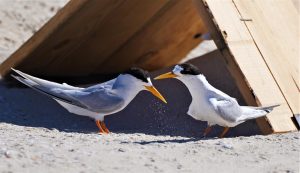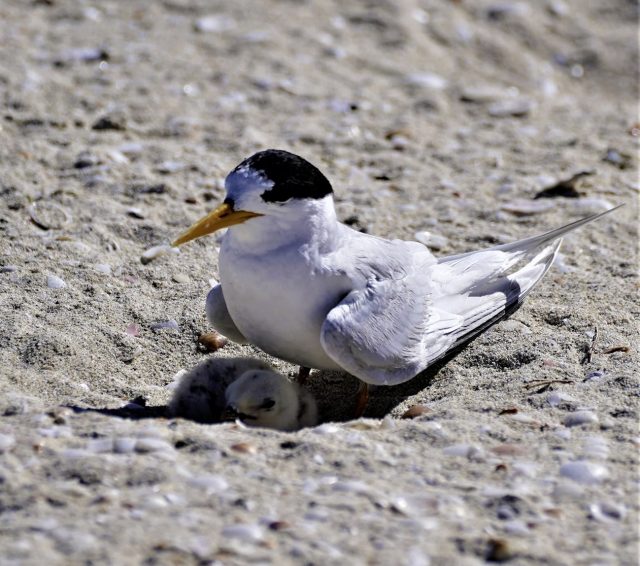The Fairy Tern is a small, coastal seabird, found between Karratha and Esperance WA. They measure about 250 mm from their bill- to tail-tip, and in peak breeding condition, they feature a dark black head cap and bright orange bill and legs. Sadly, it is estimated that there are fewer than 3,000 pairs of Fairy Terns left in WA due to the loss of breeding habitat combined with disturbance from intensive human-induced activity has resulted in reduced breeding success.
According to the WA Fairy Tern Conservation Network and the Conservation Council of WA, the mouth of the Hill River near Jurien Bay was a classic spot for fairy tern breeding and nesting, however, a colony had never succeeded due to off-road 4-wheel driving, feral animals, and illegal camping.
Earlier this year, Midlands Biosecurity Group (MBG) Licensed Pest Management Technician (LPMT), Andy Walker had the opportunity to take on work in a volunteer capacity to support the protection and re-establishment of the Fairy Tern population at this site after some pairs were spotted.
Andy jumped at the opportunity to assist in the project where Jurien Bay locals, shire rangers and experts worked together for the first time to protect a nesting colony found in the area.
As an LPMT and an integral part of the MBG team, Andy believes effective feral pest control is important not only to ensure the agricultural industry is able to remain profitable but also for the protection of the natural environment in which native species reside.
“Myself and others camped out for many nights to protect the breeding site from foxes and cats but also to prevent illegal campers which is a common issue there. We successfully removed half a dozen foxes and cats through trapping,” Andy said.
The MBG donated cameras to the project and exclusion fencing, signage were all installed by volunteers and shire rangers to help protect the birds.
Shelters built by the Jurien’s Bay Men Shed were placed at the nesting grounds, giving the vulnerable chicks shade and overhead protection.

Thanks to this tremendous community effort, it was reported that there were at least 38 chicks born, 23 of which were banded. These numbers may not seem huge but in a year of low breeding, the success of this particular population is very significant. These numbers suggest future breeding seasons will continue to be highly productive with the assistance of this project.
The success of this initial project which had no funding and was completely volunteer run, has meant that the project will now receive funding for the next breeding season.
If you would like to get in touch with the MBG for assistance or more information, contact executive officer Chris O’Callaghan at 0429446515 or visit www.mbg.org.au.








